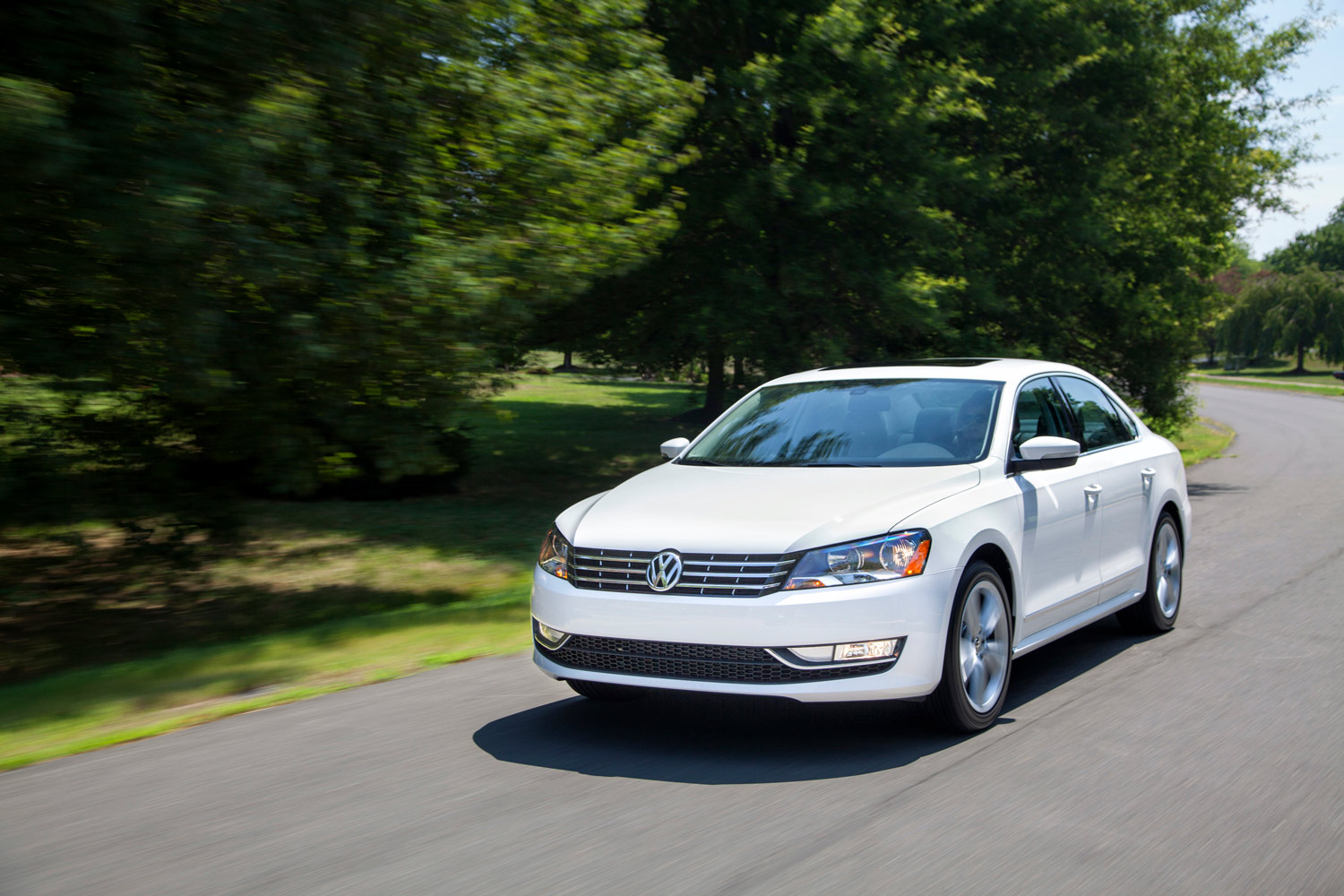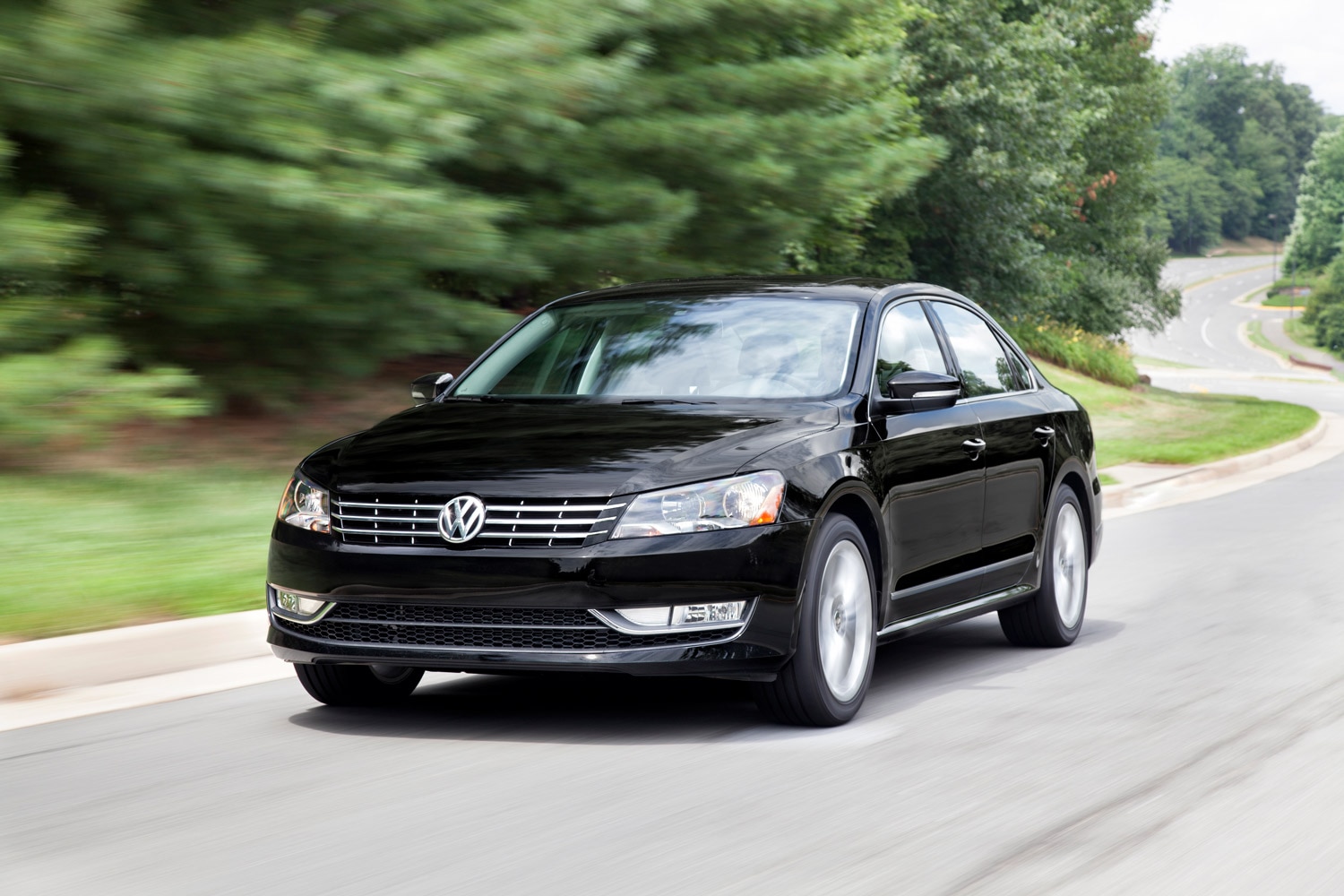Dieselgate: Why New Volkswagen Diesels Aren't Sold in the U.S.
Cheating the EPA's emissions testing cost VW billions but pushed the company to embrace EVs.
 Volkswagen
Volkswagen
In 2007, Volkswagen introduced a four-cylinder diesel engine that it said met the lowest emissions standards without the complex exhaust emissions technology that other automakers were installing on their vehicles. It seemed too good to be true, and it was. Here's what happened.
What Made Diesel a Dirty Word?
Diesel vehicles tend to be more efficient and emit less carbon than their gasoline counterparts, but their sooty exhaust is more harmful to human health. Special filters can trap a lot of that particulate matter before it enters the atmosphere, but diesels also produce high levels of nitrogen oxide, which is known to cause smog and trigger respiratory conditions, including asthma.
To address this, the federal government tightened nitrous oxide emissions regulations for vehicles by the mid-2000s, forcing automakers to innovate. Many adopted a complex exhaust treatment system that injects diesel exhaust fluid (DEF) — a mixture of deionized water and urea — upstream of the catalytic converter. This fluid neutralizes nitrous oxide, turning it into nitrogen and water. But this meant another maintenance item for diesel owners, who would need to refill the vehicle's DEF tank when signaled by a dashboard light.
Volkswagen claimed to have a better solution. It boasted that its so-called Clean Diesel engines could reduce nitrous oxide without the urea injection, relying instead on a storage catalyst to trap the pollutants. The engine would then periodically switch modes to burn off whatever's in the trap, and owners wouldn't have to worry about DEF levels.
For coming up with this "solution," Volkswagen won awards, received tax breaks, and sold a lot of diesels. In 2007, diesel models accounted for a mere 1.6 percent of VW's U.S. sales. By 2012, they made up 23.9 percent.
And then the truth came out.
 Volkswagen
Volkswagen
The Emissions Scheme Uncovered
In 2013, a group of researchers at West Virginia University received a grant to look into the real-world emissions of diesel vehicles. They found that two cars in the test — both Volkswagens — far exceeded permissible emissions standards. In 2014, the research team reported their findings to the EPA, and Volkswagen, pressured by the agency, eventually confessed to their deceit.
It turns out that VW engineers had devised a software-based defeat system that could recognize the specific conditions of an emissions test and alter the engine's operation to minimize nitrous oxide emissions. In real-world driving, however, the vehicle switched to a different mode that maximized performance and fuel economy but consequently released up to 35 times the allowable limit of nitrous oxide.
The scandal was quickly dubbed Dieselgate, using the familiar naming trope to mark the event as one of great internal corruption. The ensuing investigation implicated several Volkswagen Group vehicles using either a 2.0-liter TDI four-cylinder or a 3.0-liter TDI V6.
Notably, even when VW did use a DEF system — as on the redesigned 2012 Passat— it still employed a software cheat to curtail the urea injections during real-world driving that customers wouldn't need to fill the DEF reservoir as often.
 Volkswagen
Volkswagen
Why Would Volkswagen Cheat?
What drove Volkswagen to risk its reputation by trying to game the system? The German automaker wished to improve its U.S. sales substantially, which meant stealing market share away from efficiency-leader Toyota. The easiest way to do that, VW believed, would be to own the underdeveloped diesel space. Yet, company higher-ups had unrealistic ambitions. Volkswagen engineers informed management that they could not make diesel models meet new federal emissions standards — which required a 94 percent reduction in nitrous oxide tailpipe emissions — within the allotted development time and budget. And that's when the software cheat was born.
Clearing the Air
As you might imagine, Dieselgate angered a lot of people, and VW paid dearly. In addition to facing criminal prosecution and seeing some executives go to prison, the automaker has spent close to $40 billion to clean up this mess.
In the U.S., Volkswagen had to either fix the cars or buy them back, at each customer's choosing, and provide additional compensation in restitution and to make up for the reduced resale value of their vehicles. According to the settlement, VW had to modify or remove from circulation at least 85 percent of the affected vehicles, which it has since done. In fact, VW tells us it ultimately accepted about 97 percent of eligible VW, Audi, and Porsche vehicles into its remediation programs.
Once recalled, these cars sat on massive lots until they received their EPA-approved modification. Then VW put them up for sale and set up VIN lookup sites so prospective shoppers could verify a car's EPA status. It sold quite a few of them. "Since the end of the 2.0-liter and 3.0-liter settlement programs in 2018 and 2020, respectively," said VW spokesman Mark Gillies, "the storage lots have been closed, and the remaining inventory of modified TDI vehicles has been in the used-car market for quite some time."
That was the end of VW's U.S. diesel ambitions. In 2016, the company announced it would no longer sell new diesels in the states and would instead focus on developing electric vehicles.
VW Comes Around on Electric Vehicles
Among the other stipulations of the settlement, VW had to atone for its wrongdoing by investing $2 billion in charging infrastructure for zero-emissions vehicles. The resulting charging network, Electrify America, became an integral part of the Volkswagen Group's expansive plans to introduce new EVs and has more than more than 3,400 DC fast-chargers spread out among some 800 charging stations nationwide.
Currently, Volkswagen offers only one EV in the U.S., the ID.4 crossover SUV but has promised to reboot the classic VW Bus as an electric. The ID. Buzz should arrive for the 2025 model year followed by the ID.7 sedan.
Written by humans.
Edited by humans.
 Jim Koscs
Jim KoscsJim Koscs has been writing about cars for more than 30 years, his byline appearing in national enthusiast and trade publications, newspapers, and websites. He covers a broad spectrum of topics in automotive business, culture, collecting, design, history, racing, and technology. The "car thing" goes way back for Jim. At the 1968 New York Auto Show, he snuck away from his father to get a better look at a Rolls-Royce... from underneath it, to see if it had dual exhausts. (It didn't.)
Related articles
View more related articles